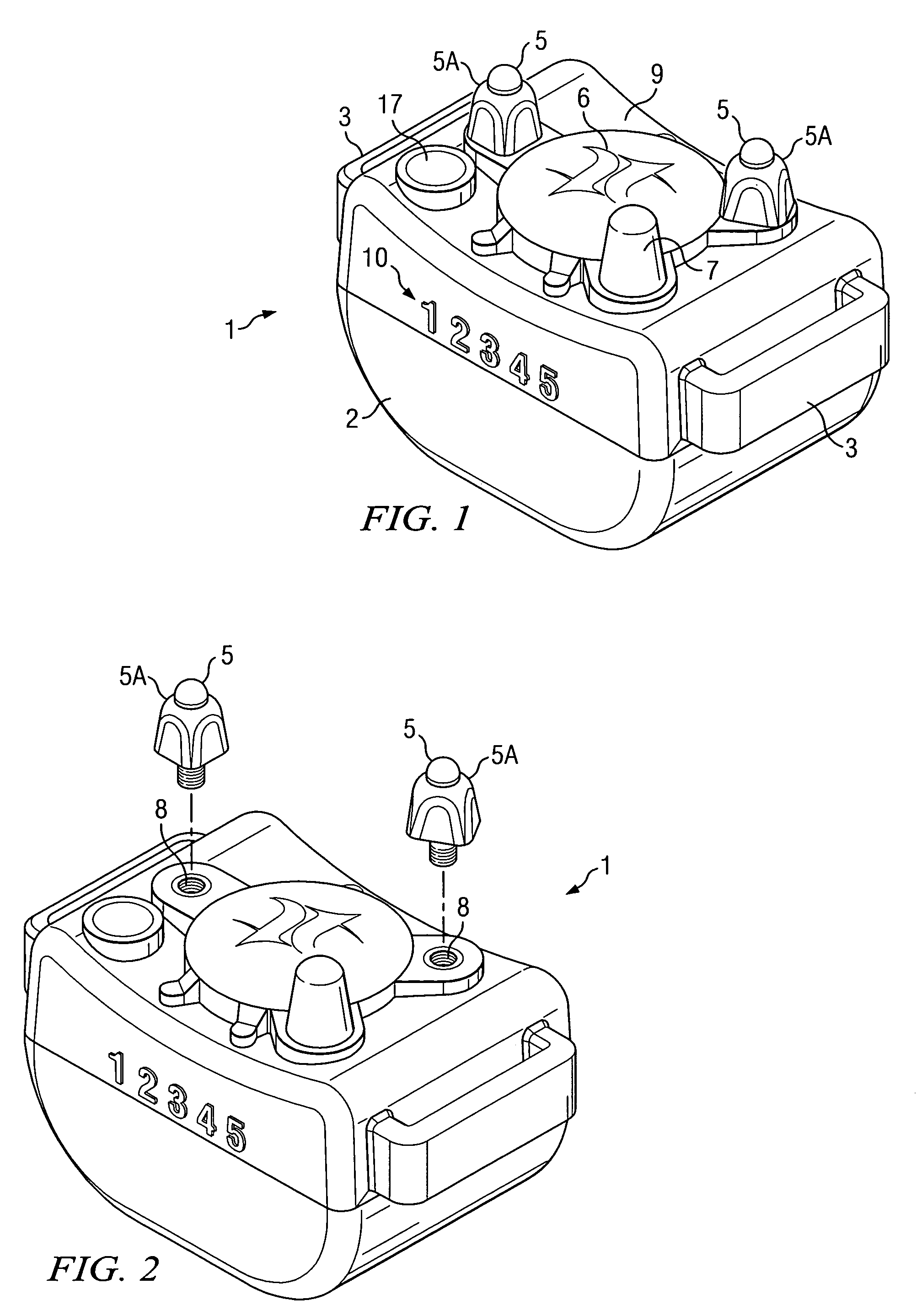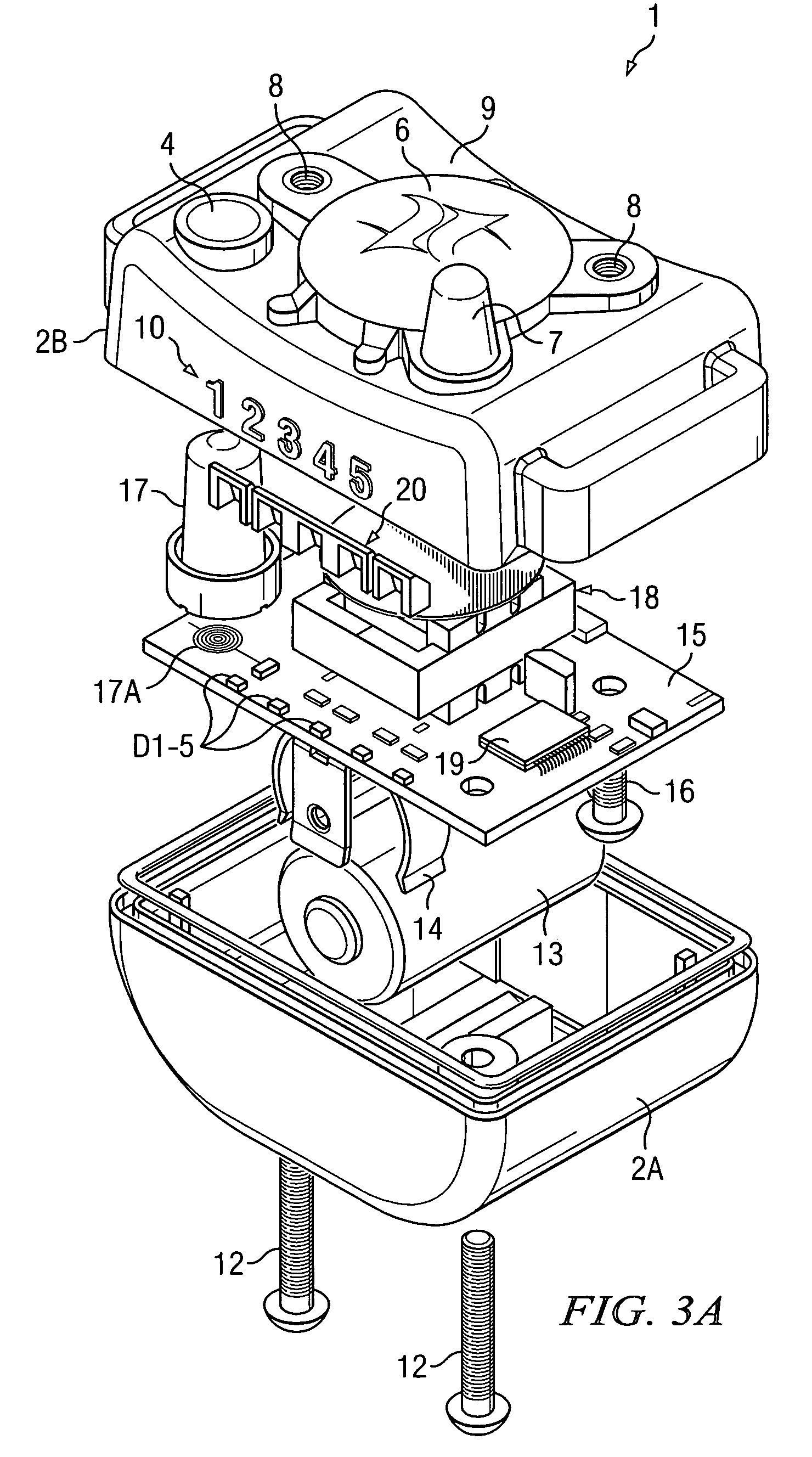Vibration sensor assembly and method for bark controller
a vibration sensor and controller technology, applied in the field of vibration sensor assembly and method of bark controller, can solve the problems of general disturbance, unsatisfactory welfare of dogs themselves and nearby people, and the battery life of some prior bark limiters is undesirabl
- Summary
- Abstract
- Description
- Claims
- Application Information
AI Technical Summary
Benefits of technology
Problems solved by technology
Method used
Image
Examples
Embodiment Construction
[0032]A preferred embodiment of a dog bark limiter of the present invention includes an improved vibration transducer structure for transmitting vibrations from the dog's neck through a plastic surface membrane of the bark limiter housing. In the described embodiment, a motion detector detects characteristic motion of the dog's neck produced as a result of barking and in response automatically powers up the circuitry from a very low power stand by operating condition. A technique of “valid” bark detection executes a capture and compare program to accomplish the function of, in effect, generating a frequency spectrum of the received sound and comparing it with a predetermined frequency spectrum to determine if the received sound constitutes a “valid” bark. A self-test mode is provided to self-test or verify operability of the neck motion sensor and the sound vibration sensor.
[0033]Referring to FIGS. 1, 2, 3A and 3B, bark limiter 1 includes a housing 2 having a lower section 2A and an...
PUM
 Login to View More
Login to View More Abstract
Description
Claims
Application Information
 Login to View More
Login to View More - R&D
- Intellectual Property
- Life Sciences
- Materials
- Tech Scout
- Unparalleled Data Quality
- Higher Quality Content
- 60% Fewer Hallucinations
Browse by: Latest US Patents, China's latest patents, Technical Efficacy Thesaurus, Application Domain, Technology Topic, Popular Technical Reports.
© 2025 PatSnap. All rights reserved.Legal|Privacy policy|Modern Slavery Act Transparency Statement|Sitemap|About US| Contact US: help@patsnap.com



